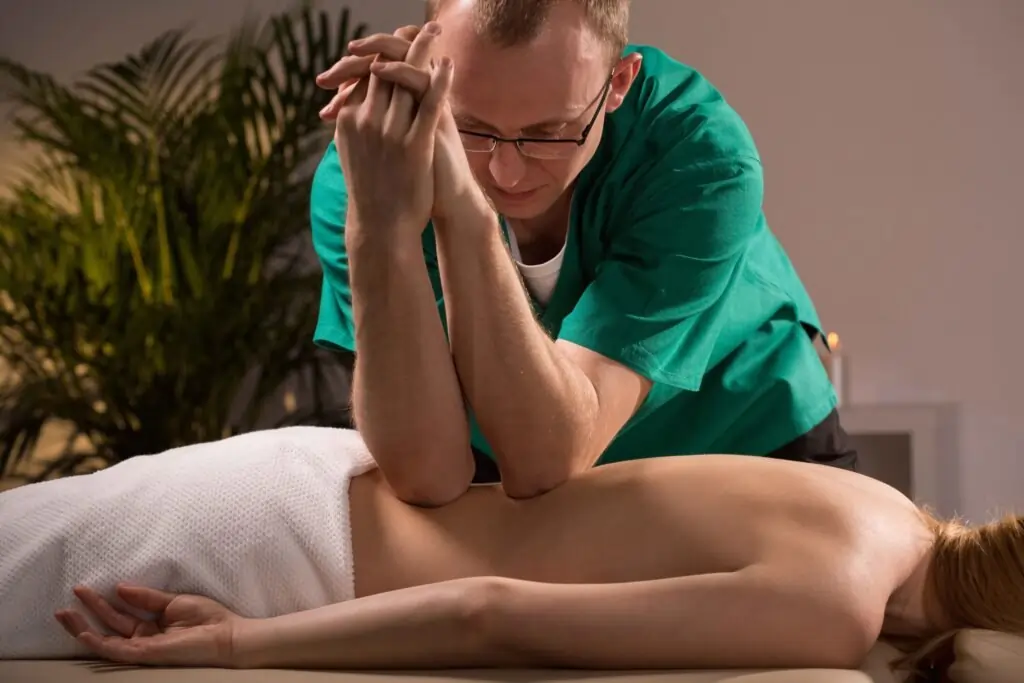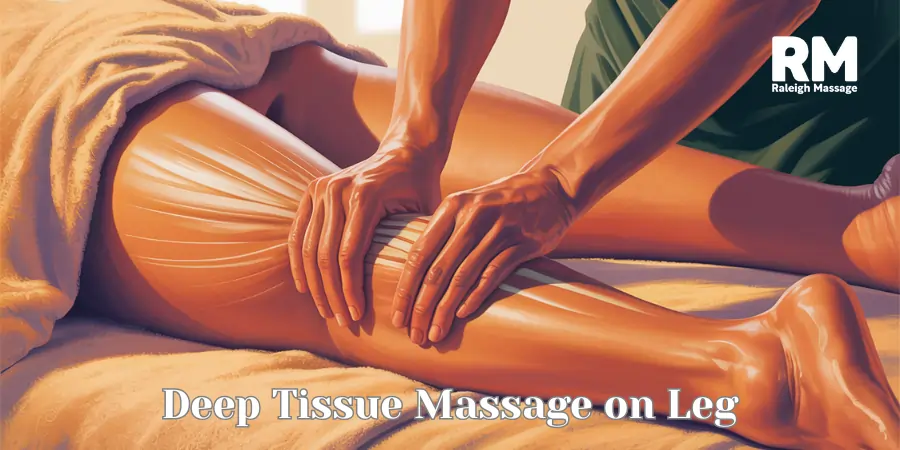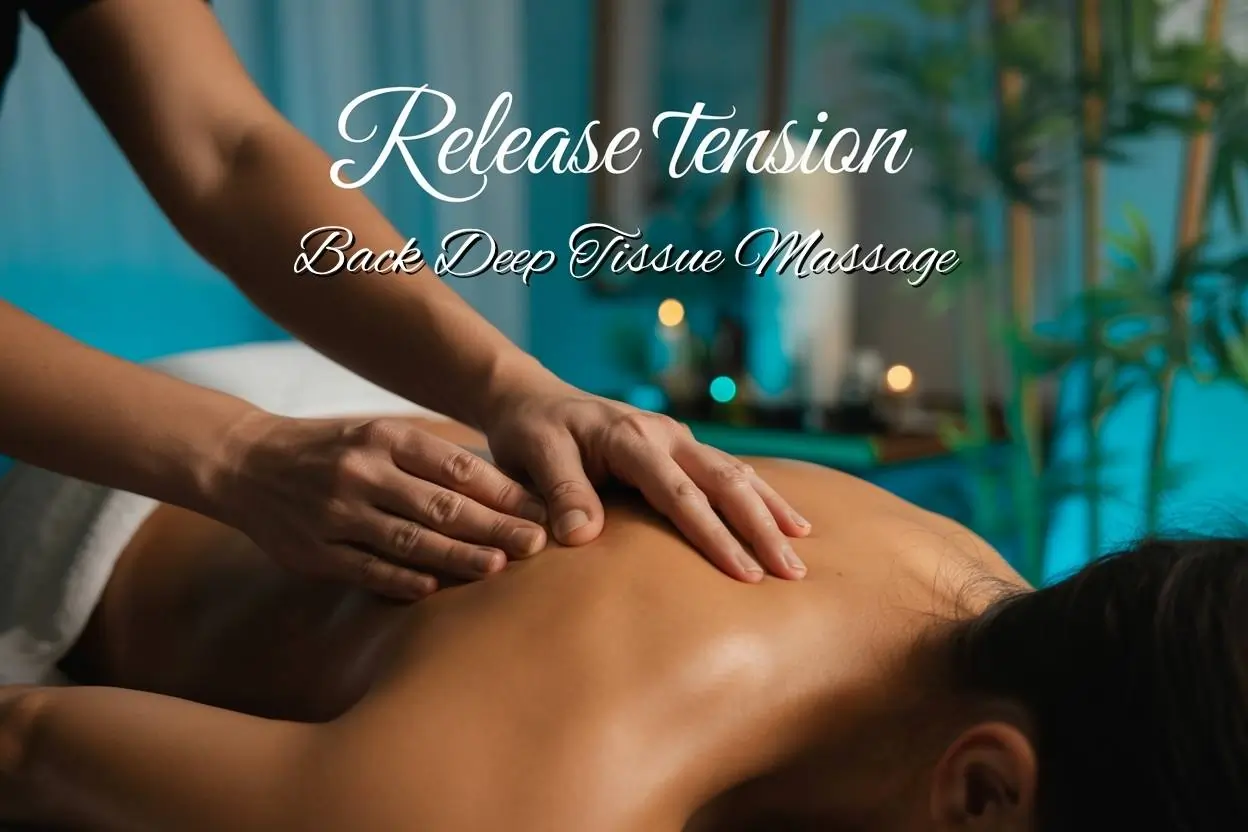Deep Tissue Massage
Do you like to get a best deep tissue massage in Raleigh or Wake Forest North Carolina, if you do, Raleigh Massage is the best Spa for you. It focuses on the deeper layers of muscle and connective tissue. When the therapist goes through those tight spots, there is really the release of the tension. It can get a bit intense at times, but it is all worth the results. I have felt that my muscles do not stiffen, and movements become easier; that is why one should really give it a go in case you feel stressed or even just a little sore. Great way to relax and relieve muscle pain. As the best Deep tissue massage in Wake Forest, NC we prioritize complete health for every patient.
What is Deep Tissue Massage?
Deep tissue massage targets the release of deep muscle and connective tissue layers. In this treatment modality, pressure is deep, slow, and firm to go down to the deeper layers of muscle, tendon, and fascia. It has the potential to break adhesions and scar tissue, dilate blood vessels, reduce inflammation, and give relief in chronic conditions where pain is involved. Most deep tissue massages are focused on particular muscles in the body that have long-term tension or pain; some common areas include the neck, shoulders, back, and hips. The therapist would mostly use their hands, elbows, forearms, or feet to press and work on the deeper layers of muscle tissue during the massage session. The massage could also include myofascial release, trigger point therapy, and stretching. Pain, the process of healing from an injury, and relaxation can best be achieved through deep tissue massage.
Benefits of Deep Tissue Massage
Deep tissue massage has a wide range of potential benefits for those seeking relief from chronic pain, injury, or tension.
Reduced muscle tone: Deep tissue massage helps relieve chronic muscle tension caused by poor posture, repetitive strain and injury.
Improving blood circulation: this can help improve blood flow and oxygenation to the affected area, aiding the healing process. This is especially beneficial for people with chronic conditions that affect blood flow.
Analgesia: Deep tissue massage can help reduce pain and inflammation in the body, making it an effective treatment for conditions such as chronic back pain, plantar fasciitis, and sciatica.
Increased freedom of movement: Deep tissue massage can help improve flexibility and range of motion, making it a valuable therapy for athletes and anyone looking to improve mobility.
Relaxation: Deep tissue massage in Wake Forest has a relaxing and calming effect on the body and can help reduce stress and anxiety. It also helps promote better sleep, which is essential for overall health and well-being.
Deep Tissue Massage Techniques
Deep tissue massage can use a variety of techniques to release tension and improve mobility of muscles and connective tissue. Here are some of the most common techniques used in deep tissue massage. Stripping: This technique involves applying deep, sliding pressure along the length of a muscle or muscle group. Your therapist can use your knuckles, elbows, or fingers to apply pressure to help break up adhesions or scar tissue. Friction applies pressure to muscle fibers in circular or reciprocating motions. This helps release tension and loosens muscle knots. Trigger point therapy: Trigger points are specific areas of tension in muscles that can cause pain and discomfort. Trigger point therapy applies pressure to these pressure points to release tension and relieve pain. Myofascial release: This technique applies sustained pressure to the fascia, the connective tissue that surrounds muscles and organs. Distortion: Stretching is often incorporated into deep tissue massage to improve flexibility and range of motion. The therapist may use passive stretching techniques, where the client relaxes while the therapist moves the body.
What to Expect From Deep Tissue Massage
When considering a massage, it’s important to know what to expect from your session. Deep tissue massage requires deeper pressure than other types of massage. The therapist uses hands, elbows, or other tools to apply firm pressure to the deeper layers of muscle and connective tissue. You may feel discomfort or slight pain during the massage. Especially when the therapist is working on areas with a lot of tension and knots. However, it is important to discuss your health with your therapist, as they can tailor the pressure to your needs. During the massage session, your therapist will ask for feedback on your pressure so you can adjust accordingly. It’s important to be open with your therapist about your health and any areas that need more attention. It is not uncommon to experience pain and stiffness after a deep tissue massage in Raleigh and Wake Forest, NC. Especially if it is the first session or if the therapist is working on an area of high tension, but this pain will subside in a day or two.
Aftercare
Proper aftercare is essential after a deep tissue massage. Here are some things to consider:
Drink lots of water: Deep tissue massage can release toxins and metabolic waste products from the muscles, which can lead to dehydration. Drink plenty of water after the massage to flush out these toxins and keep yourself hydrated.
Please try to Rest and Relax: After the massage, rest and relax. Avoid strenuous activity or exercise for at least 24 hours, as the muscles will be damaged and will take longer to recover.
Do some light stretching: Strenuous exercise should be avoided, but gentle stretching can help increase blood flow and muscle flexibility. Your therapist may recommend certain stretches to do at home after your massage.
Take a warm bath: A warm bath can help relax muscles and promote healing after a deep tissue massage. Add Epsom salts to the water to further promote relaxation and reduce inflammation.
Listen to your body: After the massage, pay attention to your body condition. If you experience any discomfort or pain, consult a therapist and, if necessary, a doctor.
Following these aftercare tips can help promote healing and recovery after a deep tissue massage. Remember to listen to your body and communicate with your therapist to get the best results possible.
Tools used in deep tissue massage
Deep tissue massage typically uses a variety of techniques and instruments to target the deeper layers of muscle tissue and fascia. Some of the most commonly used tools in deep tissue massage are:
Ankles and Elbows – These are used to apply deep pressure to specific areas of the body, especially around joints.
Trigger Point Tools – These can be used to apply pressure to trigger points, areas of muscle tension that can cause associated pain.
Massage balls and rollers – can be used to apply pressure to specific areas of the body to help relieve tension and improve circulation.
Percussion Tool – Can be used to apply rapid, repetitive pressure to larger muscle groups to improve circulation and reduce muscle tension. Overall, deep tissue massage is a versatile technique that can be tailored to each client’s specific needs, using a variety of instruments and techniques to release tension, relieve pain, and improve overall body function. improve.
Deep tissue massage is a type of massage therapy that is focused on releasing tension and discomfort in the deep layers of muscle and connective tissue. It is a therapeutic technique that uses slow, firm, and deep pressure to reach deeper layers of muscles, tendons, and fascia, which can help to break down scar tissue and adhesions, improve circulation, reduce inflammation, and alleviate chronic pain. Deep tissue massage often targets specific areas of the body where there is chronic tension or pain, such as the neck, shoulders, back, or hips. During a deep tissue massage session, the massage therapist may use their hands, elbows, forearms, or even feet to apply pressure and work on the deeper layers of tissue. They may also use techniques such as myofascial release, trigger point therapy, and stretching. Overall, deep tissue massage can be a highly effective treatment for chronic pain, injury recovery, and overall relaxation.






